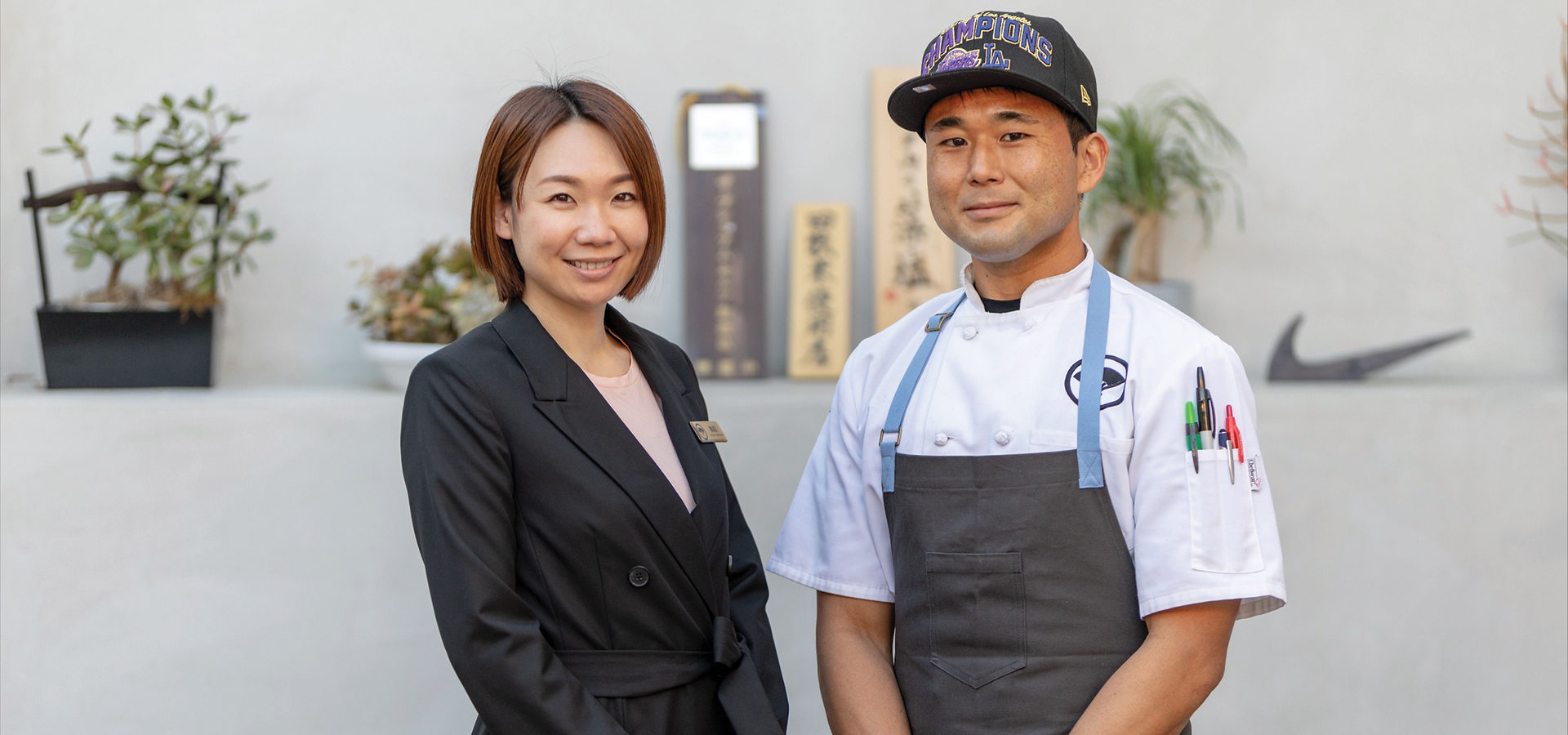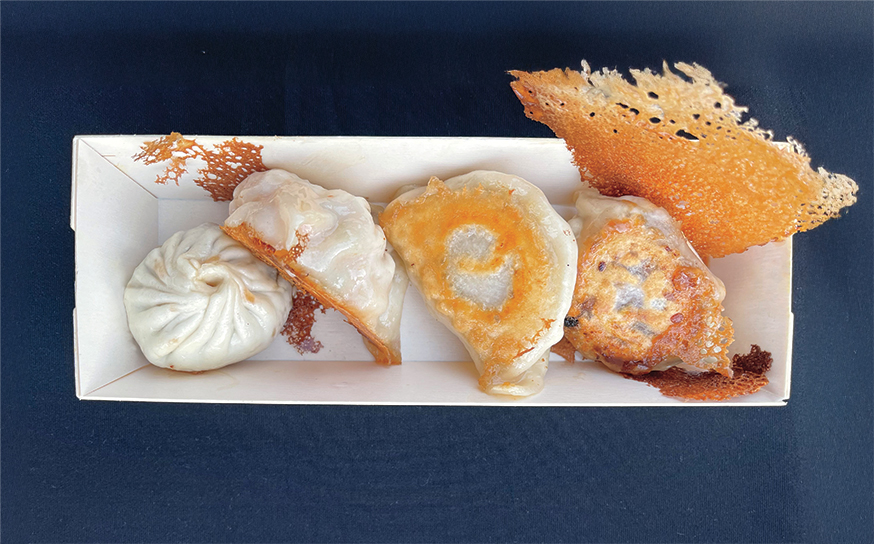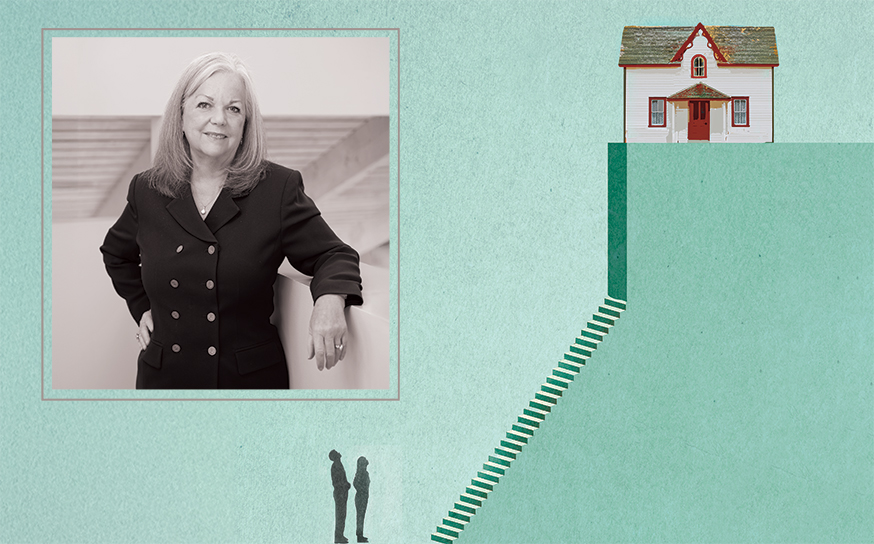Mark Okuda Took What He Learned at Asanebo to Transform the Brothers Sushi in Woodland Hills
Sushi his way.
-
CategoryEat & Drink, People
-
Written byDakota Kim
-
AboveBrothers Sushi manager Mai Tominaga and owner Mark Okuda
When Valley native Mark Okuda saw the sushi masters who were his mentors retiring, he worried that the traditions they guarded would die with them. Carrying on what they taught him, he now hopes to nurture the next generation of chefs at The Brothers Sushi in Woodland Hills, which he purchased in 2018. It had operated under the same owner for 36 years.

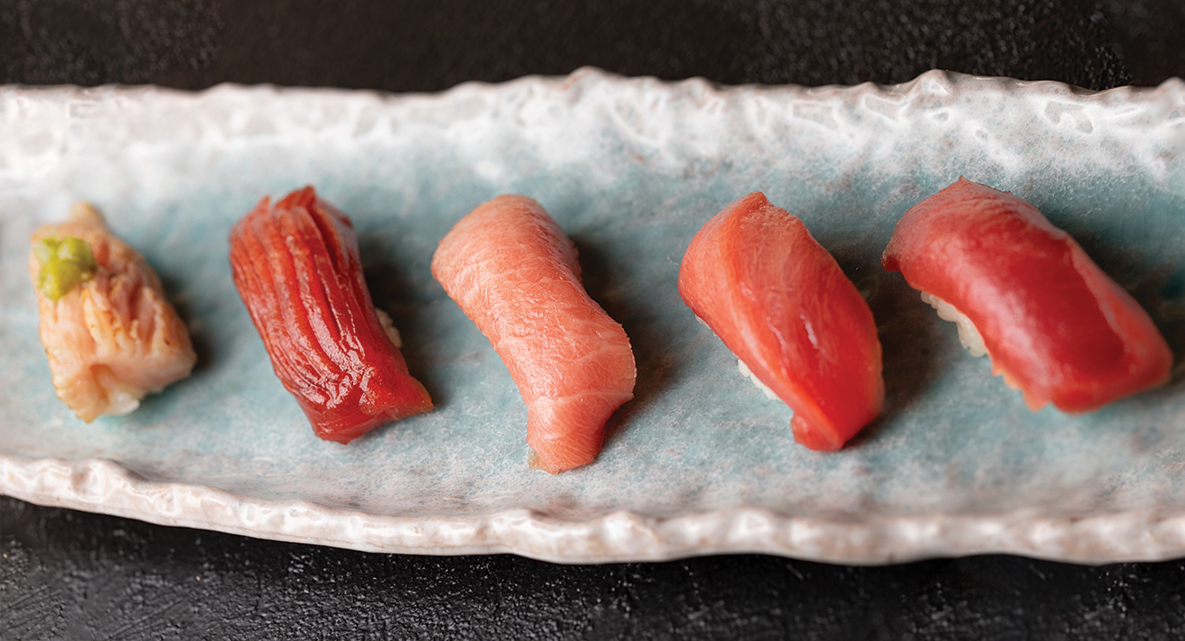

Large image above: A dish with dry-aged New Zealand king salmon and black caviar
•••
From the playful street-art mural outside to the low-key Japanese hip-hop on rotation, it’s clear that Brothers is a cool spot for both the hip younger clientele and no-fuss sushi lovers alike. Mark, who previously was a sushi chef at Michelin-starred Asanebo in Studio City, has transformed what was once a popular roll house that catered primarily to a West Valley crowd into an epicenter of culinary innovation.
Mark’s first big moves were physical. He more than doubled the ceiling height from 10 to 25 feet and added recessed lighting and three slanted skylights for a modern feel. For the sushi bar, he replaced an ancient, rusty display structure with a beautiful pressed-cedar countertop. Realizing the need for outdoor, distanced seating, he broke ground on a new patio with a retractable roof and cooling misters in June 2020, completing it just in time for a sweltering August. And just in time for a protracted COVID shutdown.
“Not only did I have to support my family, but my employee family as well,” Mark recalls. “We originally heard the lockdown would be only two weeks, so we didn’t think much of it.” As time passed, Mark realized Brothers needed to switch gears to takeout. “Menu items like the hand-roll kits and chirashi bowls saved our business,” he says.
Mid-pandemic, Brothers found solid footing in the neighborhood, reopening to a packed dining room and newly distanced diners on a twinkling patio.
Mark may have been destined for the sushi business. His mother was a server in a Japanese restaurant for more than 30 years, and he started busing tables at age 16. One day when he was 19, the kitchen needed help, so he started cleaning fish. “I really enjoyed what I was doing, and it became a career,” he says. “I always wanted a restaurant in the Valley, and I eyed this location for a long time, until the gentleman who owned it decided to retire.”
Mark is proud that the diners at Brothers are so diverse. “We have everyone pulling up, from Civics to Rolls Royces and Ferraris.” Lately he’s noticed the trend of more young groups of friends from Calabasas and Hidden Hills visiting his restaurant, along with the traditional clientele of couples on dates, work colleagues and local families.
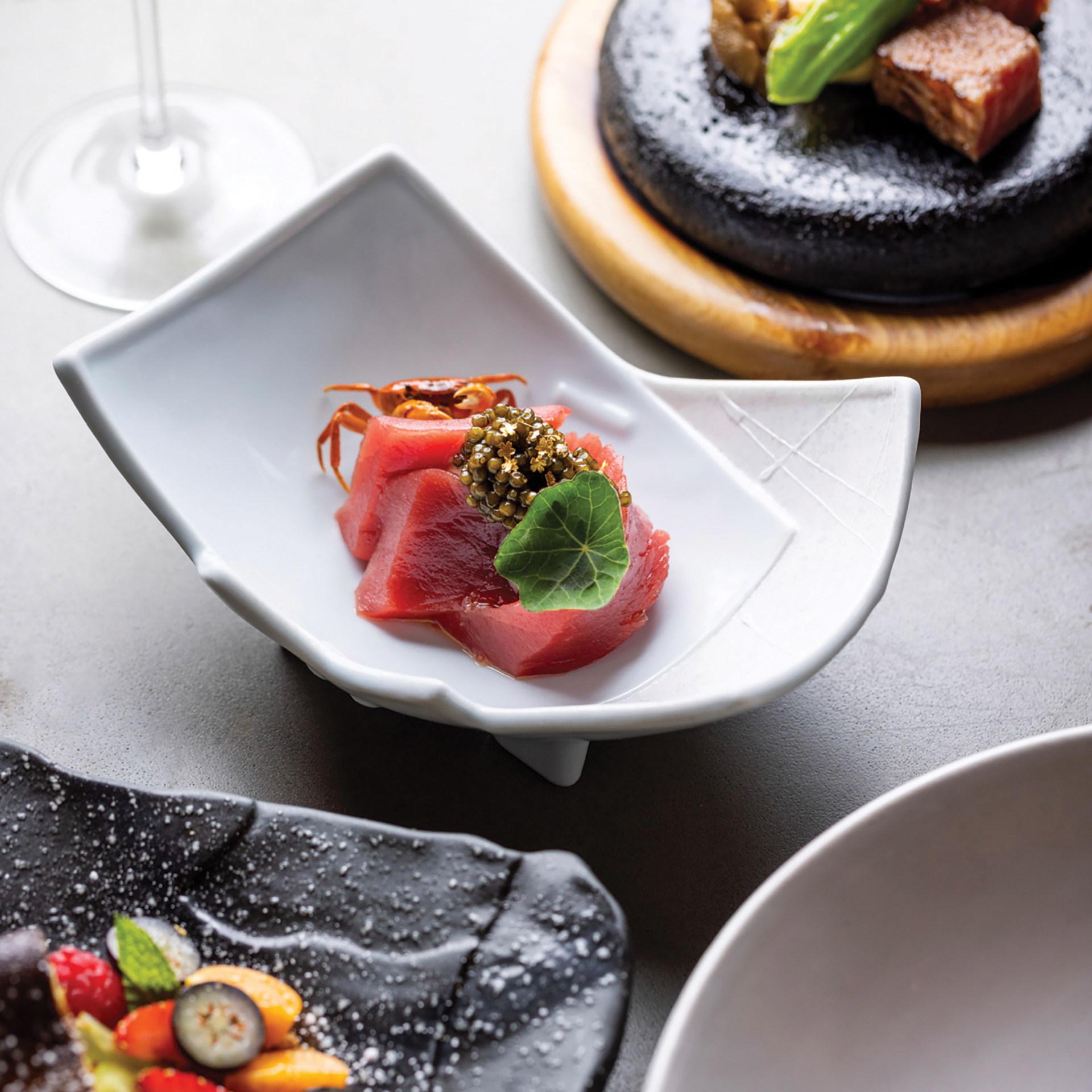
The modern, bright dining room at the Woodland Hills location serves seasonal sushi, which Mark sources according to what region is offering the most exciting catch. That means the menu varies wildly—from a light, flavorful hikarimono silverskin fish in the spring to a whole Hokkaido hairy crab with Astrea Caviar in the summer. In the fall there’s a persimmon salad with salmon tartare and matsutake tempura with sudachi lime.
Whatever the season, Mark’s menu always includes dry-aged fish done in-house, a popular trend that allows chefs to concentrate flavor by removing excess moisture from the cut. “Dry-aging takes away that slippery texture by removing the water content from the fish,” Mark explains. “What’s left is a really nice, clean, concentrated flavor.”
The fattier the fish, the longer you can dry-age. For many fish, it’s three to four weeks, but for a king salmon from New Zealand, Mark likes to age for two weeks. For a whitefish, it wouldn’t be more than five weeks. “You want that nice aged flavor you get from aged beef, but from salmon,” he says.
Guests keep coming back for Mark’s perfectly aged fish, including the dry-aged kanpachi with amberjack on a sesame miso base, and seared dry-aged toro with pickled, wasabi-marinated ice plant, a beachside succulent. The latter is accompanied by a soy citrus tomato medley that alternates between Japanese Momotaro tomatoes from the farmers market, and purple and green “Acid Trip” tomatoes from Girl & Dug Farm. “It’s savory, succulent, tart, fatty, bright—all the ingredients make a really delicious combo,” the chef says.
With its $200 omakase (includes appetizers, sushi and soup), $140 sushi omakase, superior sake, fun cocktails, and diverse a la carte menu, Brothers seems to have mastered the happy medium between being a fan favorite and an elite destination.
Mark credits several dedicated, time-honored techniques he uses to two highly regarded sushi chefs he trained under at Asanebo: Tetsu and Shunji Nakao. He says he also learned what it is to be an LA chef from them. “They taught me basic techniques, but they also taught me the process of using seasonal ingredients from Japan and products from our local farmers markets,” he says. Mark stops by the Torrance farmers market on Saturdays, where he purchases La Bahn Ranch gourmet chicken and specialty Asian produce like Momotaro tomatoes and K&K Ranch peaches.
The chef is expanding his network. This past June he opened another Brothers Sushi on Santa Monica’s bustling thoroughfare, Montana Avenue, where he serves a smaller, more refined menu than at his family-friendly Woodland Hills location. “Diners have been so excited to have us in Santa Monica, and are just as supportive of us there,” Mark says. “They’re really ready for nice fresh sushi and sashimi, and we knew how to refine and simplify our menu because of what we’ve learned in Woodland Hills.”
Join the Valley Community






